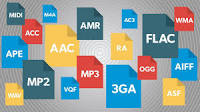A PC contains Hardware as well as software to perform computing task. In absence of Hardware or software, computer system is a meaningless device. For better understanding about the hardware and software, a short description is given below-
Hardware:
The physical components of a computer, and the various accessory devices that can be added or removed, are termed hardware.
According to processing function hardware can be classified into 3 categories-
a. Input Unit
b. Processing Unit
c. Output Unit
According to physical groups, they are classified as:
a. System unit
b. Peripherals
The System Unit
The system unit contains almost all the important components of a PC. Some common components of a system unit briefly described below:
Mother board / The System Board

The motherboard can compare with the nerves and blood vessels inside the human body, which connect all the vital organs. Instead of nerves and blood vessels, the motherboard uses tiny electrical paths to connect each component of the computer. The motherboard is what ties everything together inside the computer. Motherboard contains BIOS, the connecting slots (PCI, AGP, ISA, Memory, IDE Slots and Zip Socket for Processor etc.), Ports (USB, NIC, COM1, COM2, PS2 Mouse, PS2 Keyboard, AGP/VGA, and Printer etc.), Connectors (Power and IDE Hard Disk Drive, CDROM Drive and Floppy disk drive etc.), BUS and several Electronic components.
VGA / AGP
Generally, it sends the video signal from computer to the display device like monitor.
Sound Card
It converts digital audio signal into analog audio signal and vice-versa.
Network Adapter
It is responsible for communication between PCs through communication media. It some times refers to NIC (Network Interface Card).
Storage Medium:
The computer memory is not enough to store data and it is not possible to retrieve them after restarting the computer. Because the computer’s main memory is volatile. To use the data in future they must store in secondary storage like CDROM, Hard Disk, Flash memory / Pen drive and Floppy disk. The devices that control the read and write data in the above storage media is called drive. Hard disk drive is set inside the system unit. Pen drive is a portable electronic storage that uses flash memory. CD ROM Drive and Floppy disk drive is removable storage media.
BUS and Connectors
The data and control signal passes through the bus from one device to another. Thus, all the components are connected with each other by BUS.
Power Supply Unit
Without power supply computer does not work. Different components of the computer need different type of power supply. The common voltage levels are 12, 7, 5, 3.3 etc. Different devices have different types of connecting ports slots. The power supply unit provides all the connection solution.
Casing
It contains almost all the vital components of a computer like Motherboard, Hard disk drive, CD-ROM drive, Floppy disk drive (now it is it of market), memory card slot, power supply unit etc. The casing with all its contents is called System Unit.
Peripherals
The external parts of computer systems which are generally used for inputting and outputting information are referred to peripheral device. Some common types of peripherals are discussed below.
Monitor
It displays the activity of the computer. CRT Monitor is older version of display unit. Now a days LCD & LED Monitor is getting its popularity because it have no electromagnetic radiation that CRT Monitor has.
Keyboard and Mouse
These are input devices, send input information to the computer. An extra arrow like pointer indicates the presence of the mouse. Every computer must have at least a keyboard. Now a day wireless mouse and keyboard many user chosen who are fancy.
Printer
It is used to print text and still image on the paper.
Speaker, Microphone
These devices are used as audio output and input devices respectively.
[1] BIOS stands for Basic Input Output System. It is a program and stored in CMOS (complementary metal oxide semiconductor) chips. BIOS contains all the information of the components that are integrated with the motherboard the instruction to maintain a routine check for hardware (POST) and to initiate booting process.



Comments are closed.